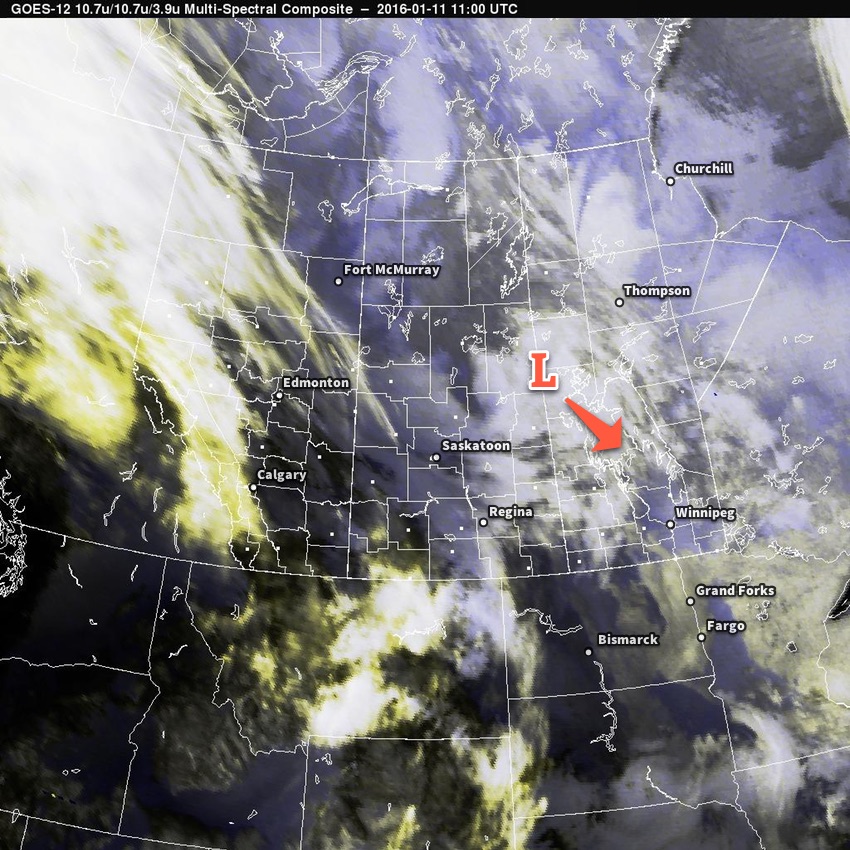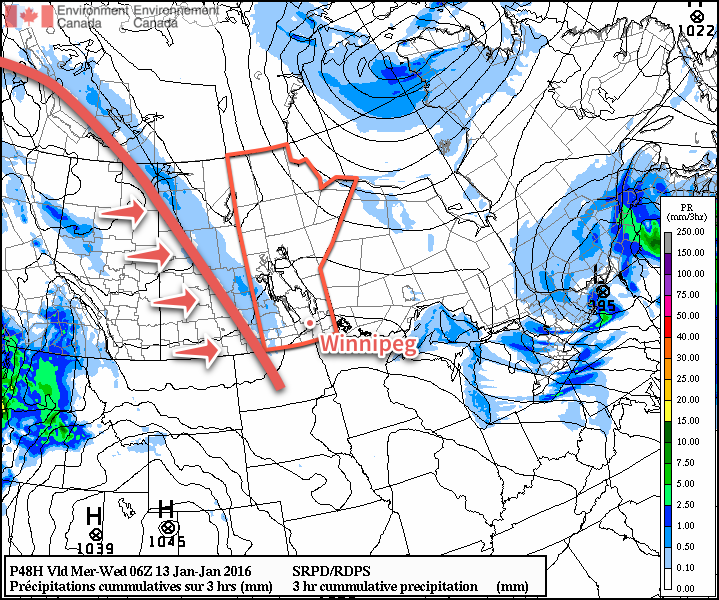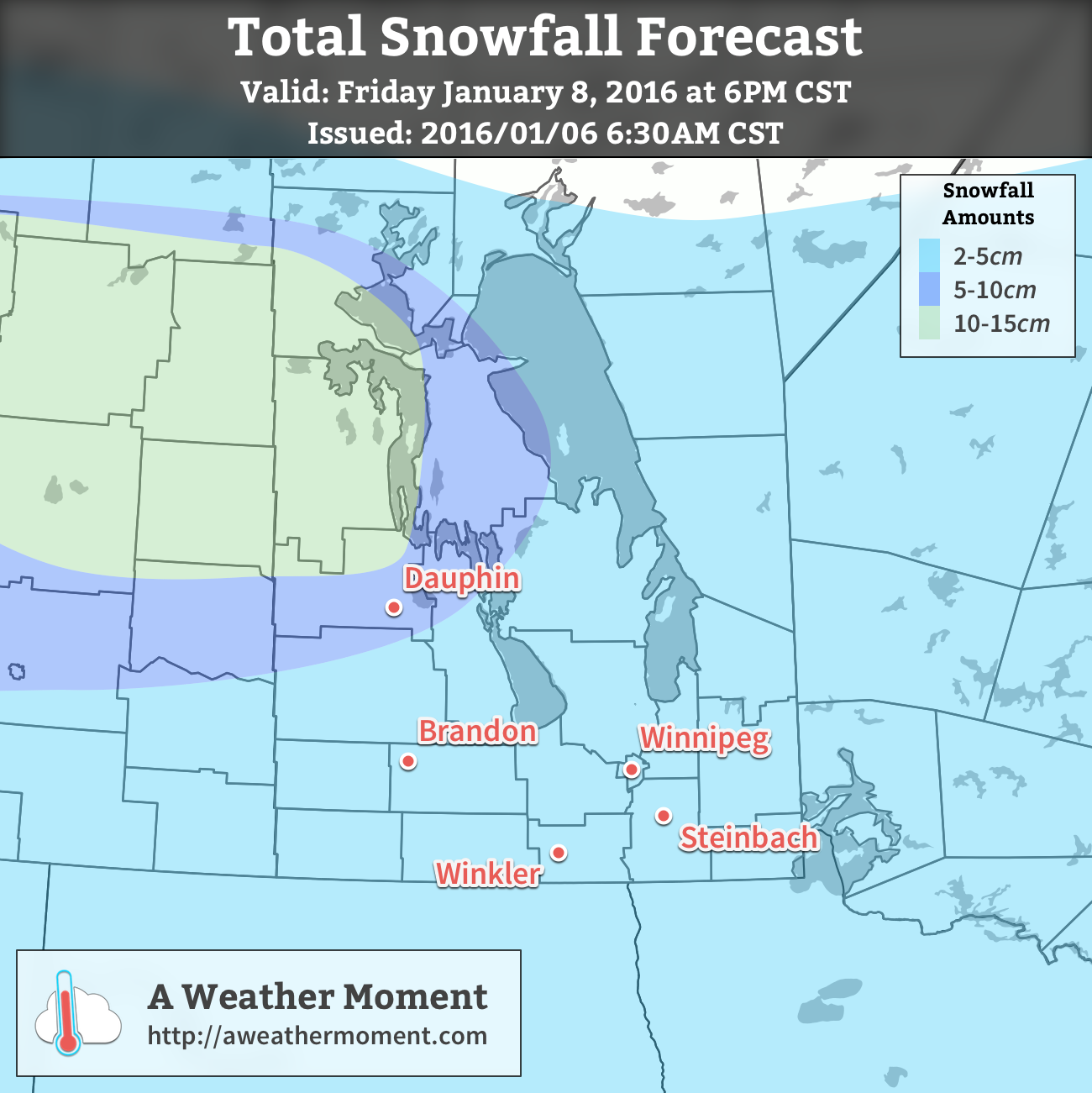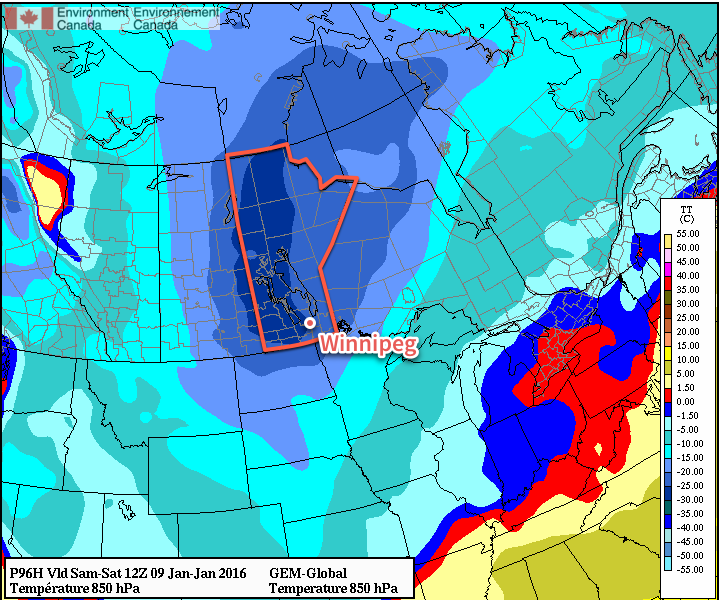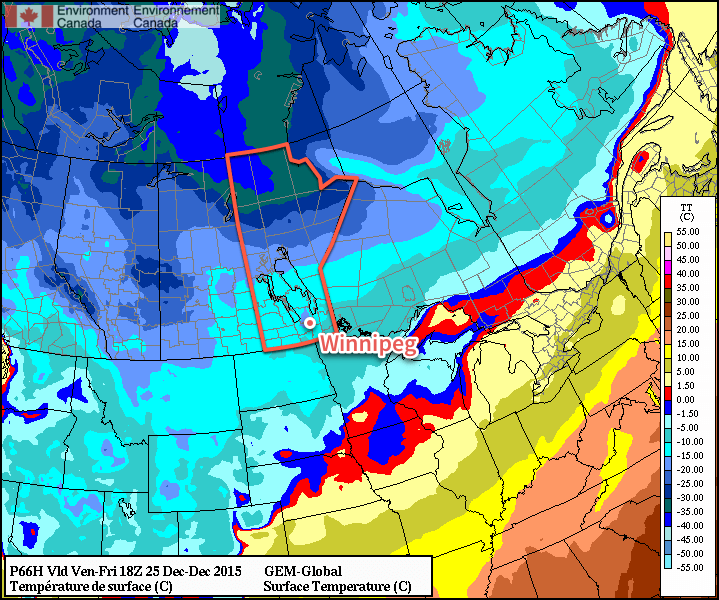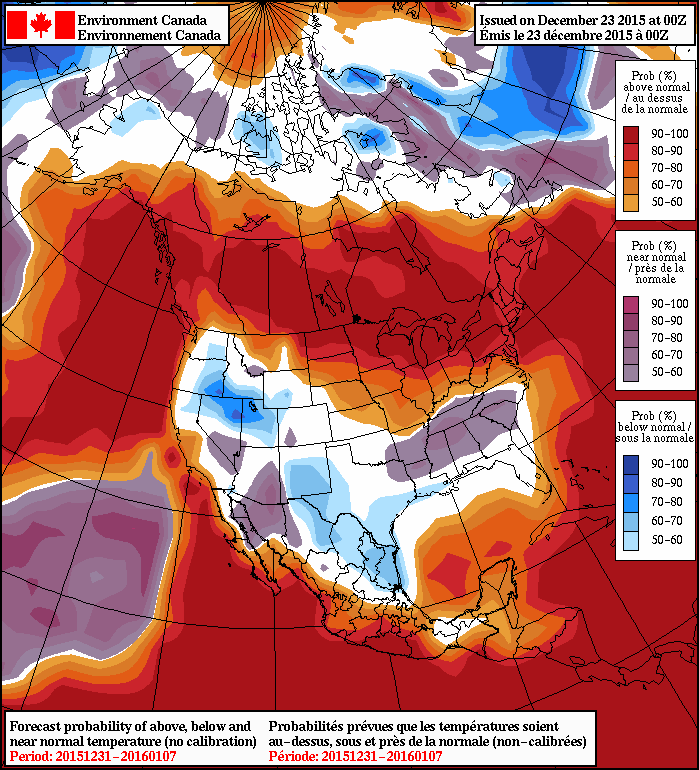A few morning flurries will mark the arrival of slightly milder air than has been in place over Southern Manitoba over the past several days, however the reprieve will be brief as another potent blast of Arctic air spills southwards for the weekend.
This morning will start off with a few flurries tapering off as a weak disturbance shunts by to the south of Winnipeg, leaving behind mainly cloudy skies for the day. There will be a slight chance of continue flurry activity through much of the day thanks to favourable snow-making temperatures throughout the depth of the cloud cover, but with the lack of any real focus for the snow, it will be very light if it occurs and pose no likelihood of any accumulation. Temperatures will be slightly milder than the highs near the -20°C mark that have been in place over the last few days; today’s high should climb to around -15°C with light southerly winds while the low tonight drops to around -19°C under mostly cloudy skies.
Thursday will bring a pair low pressure system through the province; the first skirting through the southwestern corner and the southern Red River Valley before exiting into Minnesota while the second drops down from Northern Manitoba, eventually merging into the first low near Lake Superior. This makes the forecast a little bit trickier, but fortunately neither system will bring particularly significant weather with it. The southern low will produce a swath of 2-3cm of fresh snow through southwestern Manitoba into the southwestern Red River Valley, while areas to the north and east see some light flurry activity.
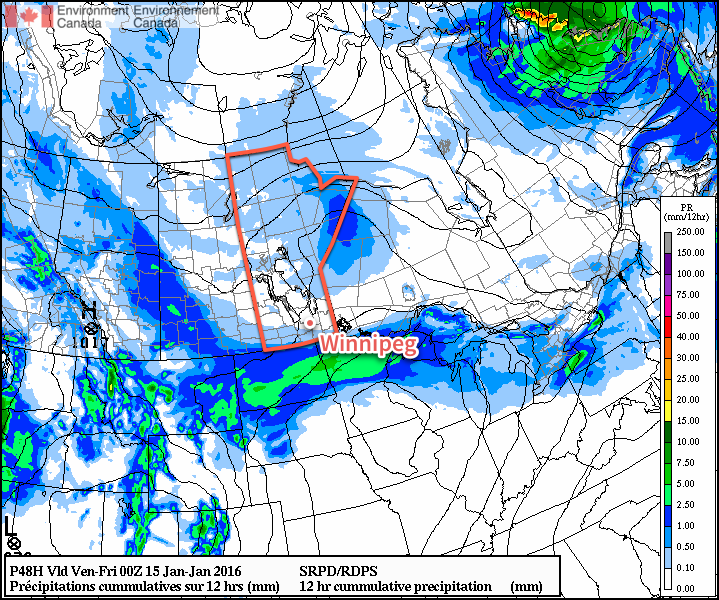
Winnipeg appears to be near the edge of that, so throughout the day on Thursday we’ll likely see fairly cloudy skies with a chance of some flurries or perhaps even some light snow if the whole system pushes a little further to the east. Temperatures will climb a little higher than today, with a high temperature near -13°C expected.[1] Skies will remain fairly cloudy on Thursday night with a chance of flurries; the overnight low should be near -22°C.
With the low pressure systems off to our southeast, all that will be left is for the Arctic air to begin building back into the region unimpeded. This next shot of cold looks, at this point, to be colder than the last by a couple degrees. Friday will mark the entrance of that air, with northwest winds near 15-20km/h and a high near -19°C under partly cloudy skies. The overnight low on Friday night will sit near a very chilly -28 or 29°C.
Bitterly Cold Weekend Ahead
This weekend will be particularly cold thanks to a deep Arctic air mass that will slowly move through the region.
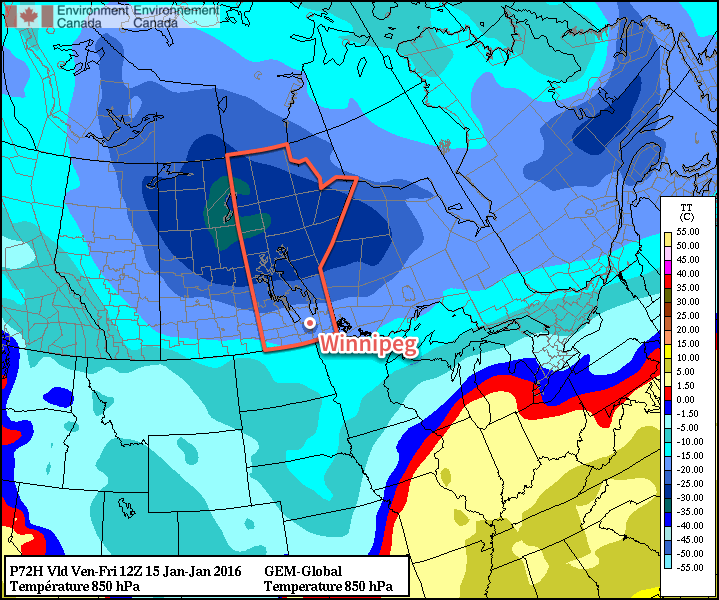
It will begin moving in on Friday, the core of it will be over Winnipeg on Saturday, and then it will begin shuffling off on Sunday. Unfortunately, as these systems move to the southeast, temperatures here at the surface tend to stay quite cold despite the warmer air moving in aloft thanks to an outflow of cold air out of the ridge to our south.
This will mean daytime highs likely around -24 or -23°C this weekend with overnight lows in the -28 to -30°C range. There’s also some indications that there will be 10 to 20 km/h winds through the weekend, which would likely mean Environment Canada would issue extreme cold warnings for wind chill values at night in the -38 to -44 range.
Temperatures will begin to moderate back towards -20°C or the low minus teens early next week.
- It’s worth noting that this system will have quite a sharp temperature boundary associated with it, so if everything were to shift east a bit we could see temperatures climbing above -10°C in Winnipeg; conversely, if it were to track further west, we could see daytime highs limited to around -17°C. ↩
